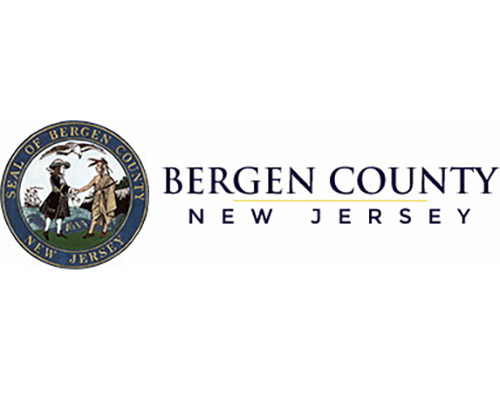
Rabbi Daniel Alter wrote an interesting and intriguing article (September 7, 2017), analyzing what he called the “The Bergen County Moment,” with Teaneck at its epicenter. By introduction, he posed the following question: “How did Teaneck [and Bergen County] come such a long way…?” As a resident of Teaneck for 40 plus years, who witnessed and was privileged to participate in this phenomenal growth, I would like to share some observations, perspectives and, most importantly, context to this “Bergen Moment.” My perspective will primarily be about Teaneck and is not meant to be exhaustive, as a complete book should really be written on this topic.
In early 1971, as Congregation B’nai Yeshurun (CBY) had recently completed what is today known as the Old Main Sanctuary, there was no mikvah, no eruv, no kosher restaurants, no reliable kosher bakery, no kosher supermarkets, no adult education, only one day school—Moriah—(Yavneh was still in Paterson), and no yeshiva high schools.
In order to make a minyan for Maariv, CBY maintained a rotating list of people who would obligate themselves to attend. Other than a shiur on Shabbos between Mincha and Maariv, there were no other official shiurim. Periodically, families joined together to make a bulk order from the Monsey takeout, which would be delivered to one location for individual pickup. To obtain fresh challah for Shabbos one would need to travel to Washington Heights.
Baby Boomers were getting married at a time when the exodus to the suburbs was increasing dramatically. Other than Monsey and Far Rockaway, there were not many suburban alternatives for Orthodox families to find a Torah-observant community with religious necessities in place. Teaneck was “lucky”; hakol talui b’mazel, afilu sefer Torah she’b’heichal (which sefer Torah is removed from the ark to be read from is also dependent on mazel). It was conveniently located near Manhattan, which is where most people worked at that time, was close to Yeshiva University, as mentioned by Rabbi Alter, and had affordable apartment housing from where many young families transitioned to single-family homes. In general then, what began to attract Orthodox Jews was Teaneck’s location and the fact that the basic necessities of religious life, primarily the existence of a shul, were in place.
Other smaller shuls were formed by the late ‘70s to accommodate the continuing influx, and resulted in a critical mass of Orthodox Jews, especially young marrieds, that in turn increased the demand and opportunity for more and expanded day schools and other religious amenities, such as the mikvah and the eruv. There were now more Torah-learning opportunities, including the first Daf HaYomi shiur at CBY, initiated by Rabbi Yossie Stern, z”l, that was part of the cycle that began in 1981.
However, by the mid 1980s, other than one or two kosher restaurants/pizza shops, the “finer” amenities of religious life (kosher supermarkets, bakery, high schools, takeouts) were still not found in Teaneck. By 1990, much began to change, especially with regard to the religious amenities. Rinat Yisrael transitioned from the single-family house it had occupied to a beautiful new facility as it continued to draw young couples, many of whom had spent time learning Torah in Israel before the widespread phenomenon of the gap year was popularized. Beth Abraham moved to a more centralized location in Bergenfield as Rav Neuburger was welcomed as the new shul rabbi. A greater Teaneck presidents’ committee was organized, consisting of the presidents of all the shuls to address and oversee the mikvah, eruv and the tzedaka solicitations in the community—the forerunner to today’s tzedaka committee. NORPAC, a pro-Israel political action committee, was started by Rabbi Menachem Genack in Englewood arriving in Washington, D.C., with its first delegation of about 15 members. In the ensuing year, a small cadre of talented and committed people joined Rabbi Genack’s efforts and expanded to Teaneck, resulting in close to 200 people arriving in Washington that following year. The formation and growth of NORPAC from within the Orthodox community was indicative of a maturity and confidence of the Orthodox community in general and particularly in Bergen County. Dr. Ben Chouake subsequently elevated, and continues to elevate, NORPAC’s influence and geographic footprint to unprecedented levels. In 1993, Professor Chaim Soloveitchik’s seminal essay “Transformation of the Contemporary Orthodox Community” appeared in the RCA journal Tradition, citing Teaneck as an example of the Modern Orthodox community.
By the late ‘90s, another inflection point was reached as the unabated influx of new families continued, the “finer” amenities became available, day schools and high schools expanded further, even as new ones were started. The various shuls, now including the growing south of Cedar and Beth Aaron communities and the Roemer Shul (Keter Torah), represented the nuanced differences along the entire spectrum of Modern Orthodoxy (the apolitical definition), which now made moving to Teaneck a real alternative, and even a first choice, when compared to other suburban Orthodox communities like Monsey (which still had a significant Modern Orthodox community), the Five Towns and even Passaic.
By the beginning of the new millennium, both the spiritual and physical amenities began to rival and even surpass the most established of other Orthodox communities. It is only at this point, 30-40 years later, that the “Bergen County Moment” Rabbi Alter describes in such detail begins to evolve.
I would respectfully add an additional challenge and concern to the ones Rabbi Alter outlined, a concern that is focused inwardly. While the RCBC represents the Bergen community as a whole with reference to the religious issues that arise, a parallel committee of lay leaders does not exist. As our community, im yirtzeh Hashem, will continue to grow, a committee that can address strategic planning for our various, and ultimately limited, resources will be critical.
By Rabbi Israel ‘Tuly’ Polak
Rabbi Israel “Tuly” Polak has lived with his family in Teaneck for over 40 years. He has been privileged to offer shiurim in different venues and is currently the maggid shiur at the SWEAT Minyan.










